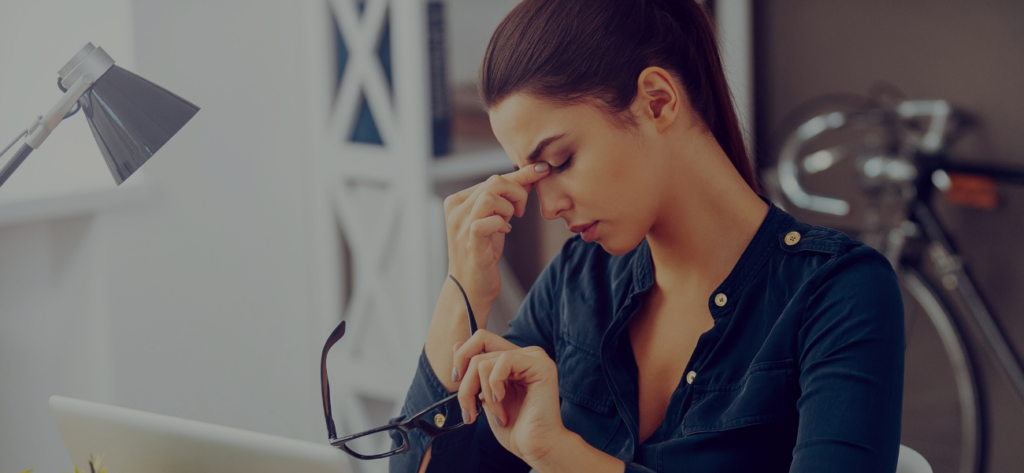Recurring headaches are probably second only to lower back pain in regard to frequency of ailments suffered by the general population. Don’t expect this trend to change in the near future. Most of us are working harder than ever, which only correlates to more time seated at a desk using the computer or phone, not to mention the inherent stress which is included at no extra cost.

Headache pain is
- tension
- migraine
- sinus
The most correctly named and frequent of all is
Postural Patterns
As we progress through our working careers, the tendency is to fall in to compensatory postural patterns. The end product of this is commonly seen in the senior citizen, now hunched over and straining to keep the head erect. Our bodies are quite resilient however, and tend to tolerate such abuse without much difficulty as young adults. After 10-20 years, early signs emerge. One of which is the recurring headache at the junction of the head and neck (occiput).
Place your finger across this area, and allow your chin to move forward. One will feel the finger being compressed. In similar fashion, the vertebrae that are immediately in front of the finger will undergo the same fate, ultimately becoming a source of pain. Heads can weigh from 8-15 pounds, think of it as a bowling ball sitting on a big golf tee. If not situated perfectly, problems will arise. Musculature in this area will also tighten, placing considerable tension on the base of the skull where it attaches. By probing around with one’s finger, it is easy to find these areas of soreness. Many nerves also exit from the base of the brain and spinal cord in this region. Some of these nerves relay information from around the eyes and forehead. If irritated due to local compression, the resulting headache can be felt in these areas as well the back and top of the head.
Good Posturing
As you probably expect, good posturing and ergonomics play a crucial role. Make sure that your desk fits your body and place working materials such that they allow you to stay in a good postural position during the day. After sitting for 1-2 hours, completely change your posture by standing and stretching. This need only take a few seconds, and will help tremendously. If at the keyboard, stretch shoulders, elbows and wrists as well. An easy stretch for loosening up the base of the occiput entails gently tucking the chin towards the Adams apple. This is most easily done in a lying position, (don’t lift the top of the head), but can also be done seated or standing. Hold for 5-10 seconds and repeat 4-5 times. Upon arriving home at the end of a day’s work, double a pillow and place on the floor. Arrange yourself such that the pillow is placed in the region of your mid back as you lie over top of it. Interlock fingers behind the head and allow the elbows to drop to the side. Foot bottoms can also be placed together with knees dropping to the side. One should feel a comfortable stretch through the middle back and chest wall. These can be done frequently during the day. Continue until the majority of the tightness resolves. Be patient, this will take some time, but is well worth the effort.
- Staying Fit While Aging - July 3, 2023
- How Much Exercise do You Need to Stay Healthy? - September 21, 2022
- Even a Small Amount of Exercise can Have Huge Benefits for Our Bodies - March 16, 2022
